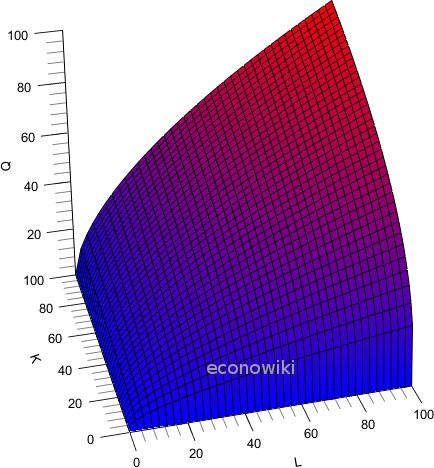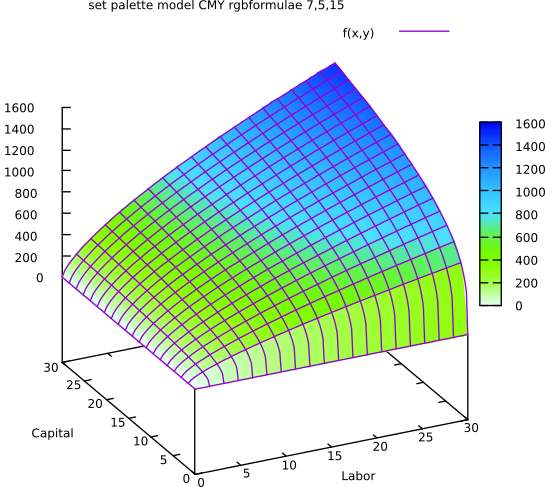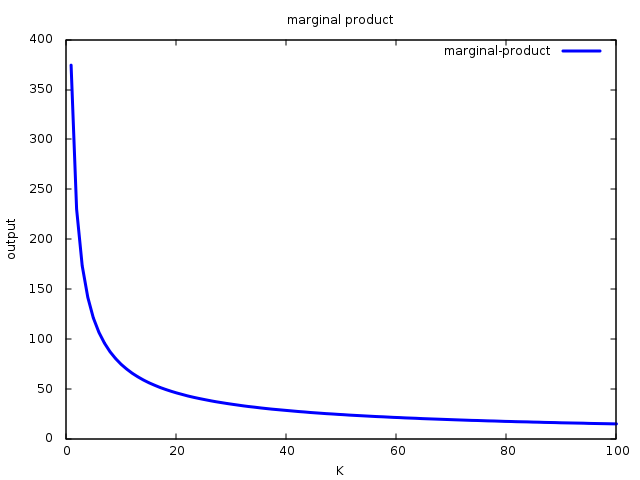Table of Contents
Cobb-Douglas Production Function
The Cobb-Douglas Production Function is a particular form of the Production Function.
It takes the following form:
Q(L,K) = A Lβ Kα
- L:labor
- K:capital
- Q:output
- A>0
- 0<α<1
- 0<β<1
Properties of Cobb Douglas Production Function
- The marginal product is positive and decreasing.
- Output elasticity is constant, equal to α for L or β for K.
- Return to scale are α+β
Plot of a Cobb-Douglas production function:


The marginal product is positive and decreasing
This behavior is usually seen in a lot of real world examples. To find the marginal product of a production factor, we derivate the total output with respect that factor. For example, to find the marginal product of capital:
∂Q / ∂K =
= α * (A Lβ ) K(α-1)
Given that α is positive and lower than 1, the marginal product is positive and decreasing.
Graphically:

Output elasticity is constant
Output elasticity is defined as the percent change in output, when there is a percent change in one production factor.
In the case of the Cobb-Douglas production function, output elasticity is constant. Output elasticity of labor is β and output elasticity of capital is α.
Proof
By definition, output elasticity is:
(∂Q/Q) / (∂L/L) =
= (∂Q/∂L) / (Q/L) That is the marginal product of labor divided the medium product of labor.
= [ Aβ Lβ-1 ) Kα ] / [ A Lβ Kα / L ]
Given that 1/L is L-1 , ALβ Kα /L is ALβ-1 Kα . It follows that output elasticity is:
= AβLβ-1 Kα / ALβ-1 Kα
The only difference between the numerator and the denominator is β; then:
Output elasticity = AβLβ-1 Kα / ALβ-1 Kα = β
Return to scale are α+β
Returns to scale measure the proportional change in output, given a proportional change in the quantity of every factor of production.
Proof
If we increase every factor in a given constant c, the new output level will be:
Q' = A(cL)β (cK)α
= Acβ Lβ cα Kα
= cβ cα ALβ Kα
= cβ+α Q
This means that if we increase every production factor by c, the output level will increase in cβ+α .
If β+α = 1, the output will increase in c. In this case, the Cobb-Douglas production function has constant return to scale.
If β+α < 1, the proportional increase in output will be lower than the proportional increase in production factors. In this case, the Cobb-Douglas production function has decreasing returns to scale.
If β+α > 1, the proportional increase in output will be higher than the proportional increase in production factors. In this case, the production function has increasing returns to scale.